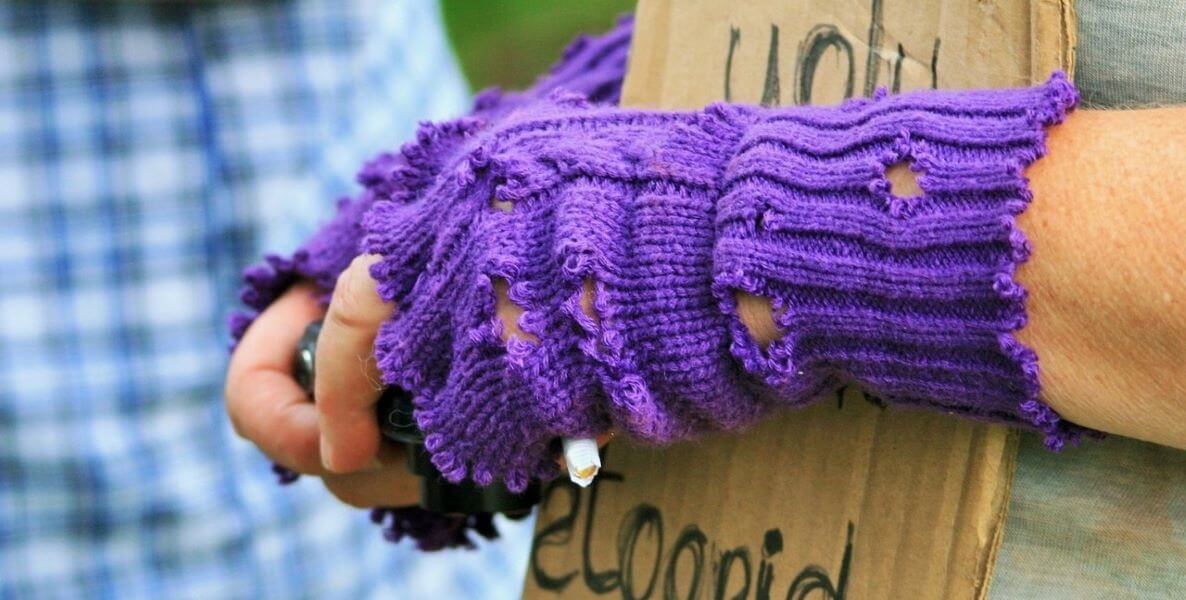If you think tiny houses are cool or a great way to end homelesness, I am here to ruin your day.
First, let me back up and say that I was homeless—as in literally sleeping outside, and then in a city shelter. Later, I also spent time working for the Mayor’s Office and the Office of Homeless Services. Now, I’m a journalist and commentator again. So when I write, I have several hats on, including lived experience.
There are three reasons why tiny houses are really a huge problem for society: they cost too much and help too few; they don’t end homelessness, they sustain it; and they advance the idea that homeless people are subhuman.
First, the most inflammatory of my claims deserves immediate explanation. What do you keep in a shed in the backyard? Would you keep your mother in a shed or kennel with no running water? Why is this viewed as a great idea when it’s applied to people experiencing homelessness?
This is also why I am not enthusiastic about restaurants donating “leftovers,” also known as garbage or compost, to the homeless. What do you give your own table scraps to? What have some of you done with your literal doggie bags when walking down Center City streets?
MORE ON SOLVING HOMELESSNESS
While the gentrifying middle class in Philadelphia loves their dogs, applying this approach to other human beings is offensive to me. I think it implicitly allows a current of bigotry against people experiencing homelessness to continue, too. “So long as they’re less than me, that’s OK, they deserve help,” the bourgeoisie might think. “But provide them actual homes? In my neighborhood? Make them peers and equals with me?”
What of solutions, then? At least the people treating the homeless like dogs are doing something. Am I just complaining?
It’s a great question. The solution is simple: We can end homelessness tomorrow. It’s just that our legislatures are all on vacation and nobody’s proposed it—yet.
When I worked at the City’s Office of Homeless Services, we estimated that for about $30 million yearly, we could effectively end street homelessness in Philadelphia. That sum would encompass the local cost of permanent supportive housing for every chronically homeless person on the street and then some. It’s a rather large overestimate, really. I never understood why we didn’t just ask for it.
Researchers recently estimated it would cost about $30 billion to do the same on a national scale.
Instead of this great solution, City Hall would rather view $30 million—which for the record is 0.6 percent of the City’s overall $5 billion budget—as better for other projects, perhaps the bloated police budget that never affects crime rates either way or maybe toward the $40 million the City paid for OnePhilly, the payroll system that took half a decade to get up and running that didn’t work its entire first year of operation.
This solution they’re ignoring would effectively end chronic homelessness in Philadelphia. Talk about a return on investment. Even better? It can be done in a research-backed, ethical and professional way using best practices.
Permanent supportive housing is, unlike tiny houses, evidence-based and, unlike OnePhilly, actually works. It’s proven to be about 90 percent effective at preventing a return to homelessness. Likewise, rapid rehousing is a government housing program often but not exclusively focused on families that lasts up to 24 months that is over 75 to 90 percent effective at preventing a return to homelessness (see page 14) depending on the population served.
This research-backed, data-driven efficacy is why the U.S. Department of Housing and Urban Development funds these programs and is not as enthusiastic about, say, “tiny house villages” which in the 1930s were more accurately called “Hoovervilles” and later were called, at least until recently, encampments.
The annual local taxpayer cost of permanent supportive housing for one person is a little over $12,000. This is a fraction of what advocates estimate is the cost of that one person staying on the street, which is about $35,000 in estimated police, EMS, and other costs—to say nothing of the strain this puts on local business, civic, and tourism groups.
There are three reasons why tiny houses are really a huge problem for society: they cost too much and help too few; they don’t end homelessness, they sustain it; and they advance the idea that homeless people are subhuman.
Along with housing, which comes by way of an apartment or dorm-style efficiency in a building focused on similar needs or a housing subsidy, the federal government kicks in Medicaid-supported wraparound services, like mental health treatment, substance use disorder treatment, and medical care.
You can see why, if someone lives with a serious mental illness or has other barriers putting regularly paying for market-rate housing out of reach for them, PSH is so effective.
The Hooverville the City is currently allowing a contractor to erect off State Road has been less vocal about cost, aside from the City saying about $500,000 of federal CARES Act money would go toward it. If you ask me, it’s a great way to light half a million in once-in-a-generation funds on fire.
 I can imagine the initial hesitancy to itemize cost beyond that: A similar project in West Philadelphia says it will feature 12-two bedroom tiny homes and cost about $1.2 million. That’s $50,000 per person. Sure it’s a one-time construction cost, but do you think there’s no upkeep, depreciation, or rebuilding cost to this scheme? Let’s talk about scope, too. We’re talking about a solution for, what, a handful of people?
I can imagine the initial hesitancy to itemize cost beyond that: A similar project in West Philadelphia says it will feature 12-two bedroom tiny homes and cost about $1.2 million. That’s $50,000 per person. Sure it’s a one-time construction cost, but do you think there’s no upkeep, depreciation, or rebuilding cost to this scheme? Let’s talk about scope, too. We’re talking about a solution for, what, a handful of people?
Call me crazy, but I feel like publicly funded or otherwise supported solutions to highly visible, politicized social problems need to be scalable and achievable instead of just feel-good money pits.
Philadelphia somewhere around 900 people experiencing homelessness if you look at the last few Point-in-Time Counts, which date from before Covid-19. You tell me how valuable tiny houses are to ending homelessness.
To be fair, both the West Philly and State Road projects are operating on the assumption that they’ll receive no local tax dollars. There’s still a cost, though. And, that West Philly project might cost more than the project off State Road, because it features indoor plumbing.
The State Road project, far from where homeless Philadelphians actually are and nearly impossible to get to easily from Center City without a car, no such luxurious frills like running water or working toilets in the homes. They have electricity, though. If you have to use the toilet, you have to visit a communal structure somewhere else.
Again, we as a society are engaging in this theater despite a solution to homelessness existing at a fraction of the cost. I’m left wondering why. Is it just too boring? Evidence-based, data-driven results aren’t as adorable as a tiny house with a cute little window and a teeny planter outside, I admit.
The so-called tiny house village offers what? An experiment using human lives when we have a solution that works that we simply don’t fund? A vanity project for rich or privileged people providing a bridge to nowhere, no permanent housing? What on earth are we thinking? This is like when Elon Musk “discovered” mass transit by spending millions to develop a private subway.
Human beings deserve better than this. They deserve affordable housing. Given how achievable this is, it’s inexcusable for us to do anything less.
Probably the most obvious and glaring problem, at least to me, is that tiny houses don’t actually end homelessness. They sustain it. They give people a reason to think they can take the pressure off the government to create more affordable housing under the guise of a solution to homelessness. They’re often called a step toward ending homelessness. How is that true when the final step, affordable housing, doesn’t even exist?
By taking homeless folks off the street and putting them in remote areas while never giving them housing and in some cases “offering” them sheds without running water instead of actual homes, you are doing what, exactly?
Until there is more affordable housing, this “solution” leads nowhere. Instead, these are just feel-good boondoggles so middle and upper class people can feel like they’re doing something. Even worse, they don’t solve a problem, they make it easier to ignore. They’re storage sheds for human beings who otherwise remind us all of our society’s failure to care.
If you ask me, tiny houses aren’t heartwarming. They’re insidious. Human beings deserve better than this. They deserve affordable housing. Given how achievable this is, it’s inexcusable for us to do anything less.
Josh Kruger, a former City staffer, is an award-winning (and losing) writer in Philadelphia.
The Citizen welcomes guest commentary from community members who stipulate to the best of their ability that it is fact-based and non-defamatory.
The Citizen is one of 20 news organizations producing Broke in Philly, a collaborative reporting project on solutions to poverty and the city’s push towards economic mobility. Follow the project on Twitter @BrokeInPhilly.
Header photo by Inhabitat / Flickr




